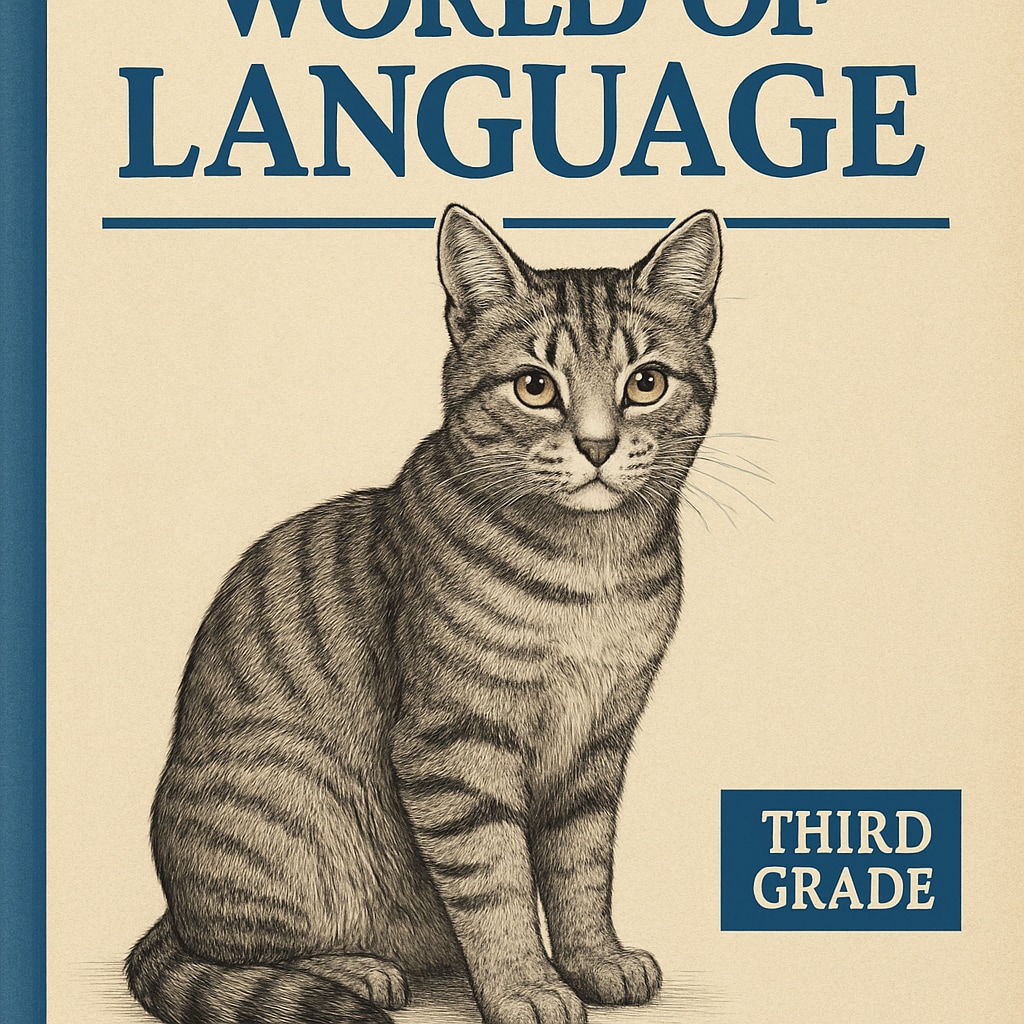In the ever-evolving world of education, the “World of Language” elementary textbooks stand out as a symbol of timeless teaching excellence. These classics, including the beloved third-grade edition with its iconic cat cover, were once central to developing language skills for countless students. Their systematic, engaging, and deep approach to teaching language arts still holds valuable lessons for educators today, even in the face of an overwhelming abundance of digital resources.

The Unique Charm of the “World of Language” Series
The “World of Language” series excelled in its ability to combine structure with creativity. Each textbook in the series was carefully designed to balance grammar, vocabulary, reading comprehension, and writing exercises. The third-grade edition, with its distinctive cat cover, became a favorite among students, not just for its charming design but also for its engaging content.
One of the standout features of the series was its use of relatable themes and age-appropriate stories. These stories provided a context for learning grammar and vocabulary, making the lessons feel natural rather than forced. For example, instead of presenting isolated grammar rules, the textbooks incorporated them into narratives that children could connect with, thus encouraging both understanding and retention.
In addition, the series emphasized the importance of systematic reading and writing practices. This approach aligns closely with what modern educators describe as “scientific reading”—a focus on structured skill-building that gradually increases in complexity. The “World of Language” textbooks exemplified this philosophy long before it became a buzzword in educational theory.
Lessons from the Past for Modern Education
In today’s digital age, where countless apps and online tools promise to revolutionize learning, the “World of Language” series offers a refreshing contrast. Its success lay in its depth and focus, rather than in overwhelming students with options. The systematic progression of topics ensured that students built a solid foundation in language skills, step by step.
Modern educators can draw several lessons from this approach:
- Consistency: The textbooks followed a clear and consistent structure, which provided students with a sense of security and predictability in their learning process.
- Contextual Learning: By embedding lessons in stories and practical examples, the series made abstract concepts more relatable and engaging.
- Balanced Approach: The integration of grammar, reading, and writing ensured a well-rounded development of language skills.
While digital tools offer flexibility and interactivity, they often lack the focused depth that a well-constructed textbook provides. The “World of Language” series reminds us of the value of a carefully curated learning path.

Nostalgia and the Enduring Legacy of the Cat Cover
For many who grew up using the “World of Language” series, the sight of the cat-covered third-grade textbook evokes fond memories of childhood classrooms. Beyond nostalgia, however, this series represents a golden era of language education—one where simplicity, structure, and creativity coexisted seamlessly.
Educational history often highlights the shift from traditional textbooks to digital resources, but the “World of Language” series remains a testament to the enduring power of well-designed print materials. Its lessons continue to inspire both teachers and students, reminding us that the art of language is as much about storytelling as it is about rules.
In conclusion, revisiting the “World of Language” textbooks is not just a trip down memory lane; it is an opportunity to reflect on what truly matters in education: depth, engagement, and a focus on fundamentals. As we navigate the complexities of modern teaching, the wisdom of classics like this series remains more relevant than ever.
Readability guidance: This article uses short paragraphs and clear subheadings to enhance readability. Lists are included to summarize key points, and transitions such as “however,” “in addition,” and “for example” are used frequently to maintain flow. The passive voice is minimized, and sentence length is controlled for clarity.


